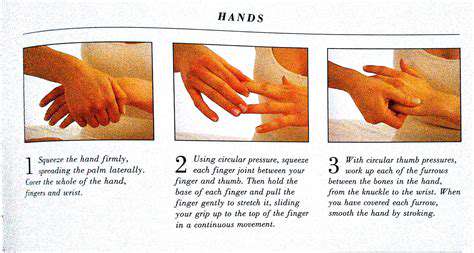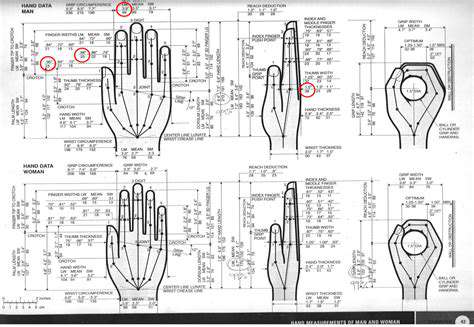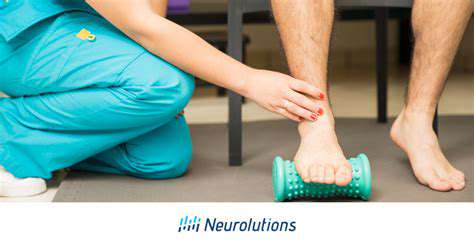The Role of Insoles in Alleviating Foot Pain
Insoles for Plantar Fasciitis
Plantar fasciitis, a common cause of heel pain, involves inflammation of the plantar fascia, a thick band of tissue that runs along the bottom of the foot. This inflammation often leads to sharp, stabbing pain, particularly in the heel, that's worse in the morning or after periods of rest. Properly designed insoles can provide significant support and cushioning for the plantar fascia, helping to reduce strain and inflammation. Look for insoles with arch support and heel cushioning to alleviate pressure points.
Choosing insoles specifically designed for plantar fasciitis can be a game-changer in managing this condition. They should offer targeted support to the arch and heel, reducing the stress on the inflamed tissue. Consider insoles with a deep heel cup to maintain proper alignment and a firm, yet comfortable arch support. This combination can help prevent the overpronation that often exacerbates plantar fasciitis.
Insoles for Flat Feet
Individuals with flat feet often experience discomfort and instability due to the lack of arch support. This can lead to pain in the feet, ankles, and even knees. Insoles designed for flat feet are crucial for providing the missing arch support and cushioning. They help to stabilize the foot, reduce pronation, and distribute weight more evenly across the foot, thus preventing further pain and discomfort.
Insoles for flat feet should feature a firm, supportive arch that cradles the foot. Look for insoles that provide adequate cushioning and shock absorption. The right insole can significantly improve comfort and reduce pain associated with flat feet, allowing for more natural movement and better overall foot health.
Insoles for High Arches
People with high arches often experience discomfort due to the lack of cushioning and support under the foot. High arches can lead to pressure points and pain, particularly in the ball of the foot and heel. Insoles designed for high arches offer targeted cushioning and support to these areas, reducing pressure and providing a more comfortable walking experience.
Insoles for high arches should provide extra cushioning and padding, especially in the areas where pressure is most likely to occur. They should offer a flexible and supportive arch that conforms to the unique shape of the foot, without being overly rigid and limiting the natural range of motion. This type of support is important for maintaining a healthy biomechanics and reducing the strain on the foot and ankle.
Insoles for Diabetic Foot Care
Diabetic neuropathy and other complications can lead to foot issues that require specific care and attention. Properly designed insoles can help prevent injuries and sores in individuals with diabetes. These insoles often feature extra cushioning and support, and may have a wider toe box to accommodate swelling and potential foot deformities.
Selecting insoles for diabetic foot care should involve a consultation with a podiatrist or other healthcare professional. They can assess the specific needs of the individual and recommend insoles that are both supportive and safe for sensitive feet. This is critical to prevent further complications and maintain a healthy foot environment.
Insoles for Athletes
Athletes often put significant stress on their feet, requiring specialized support and cushioning. Insoles designed for athletes address specific needs, such as shock absorption, stability, and arch support. They are often made of specialized materials to enhance performance and prevent injuries during rigorous activities.
Insoles for athletes need to provide adequate cushioning to absorb impact during activities like running or jumping. They should also offer superior stability to prevent ankle sprains and other injuries. Furthermore, the insole should be lightweight and breathable to ensure comfort during extended periods of physical activity. The appropriate choice of insole can significantly improve athletic performance and reduce the risk of injury.
The Official GRE Super Power Practice Online Tests provide a comprehensive and realistic simulation of the actual GRE exam. These tests are meticulously crafted to mirror the format, content, and difficulty of the real GRE, allowing you to build familiarity and confidence in your test-taking abilities. Practice tests are a crucial component of effective GRE preparation, allowing you to identify areas needing improvement and refine your strategies.

Read more about The Role of Insoles in Alleviating Foot Pain
Hot Recommendations
- The Impact of the Digital Age on Hand Function
- The Role of Hands in Agricultural Innovation
- The Impact of Technology on Hand Artistry
- The Importance of Hand Care for Artists
- How Hand Control Enhances Robotic Surgery
- The Impact of Hand Strength on Physical Labor
- How Handwriting Influences Cognitive Development
- The Impact of Environmental Factors on Hand Health
- The Power of Hands in Building Community
- The Importance of Ergonomics in Hand Health











